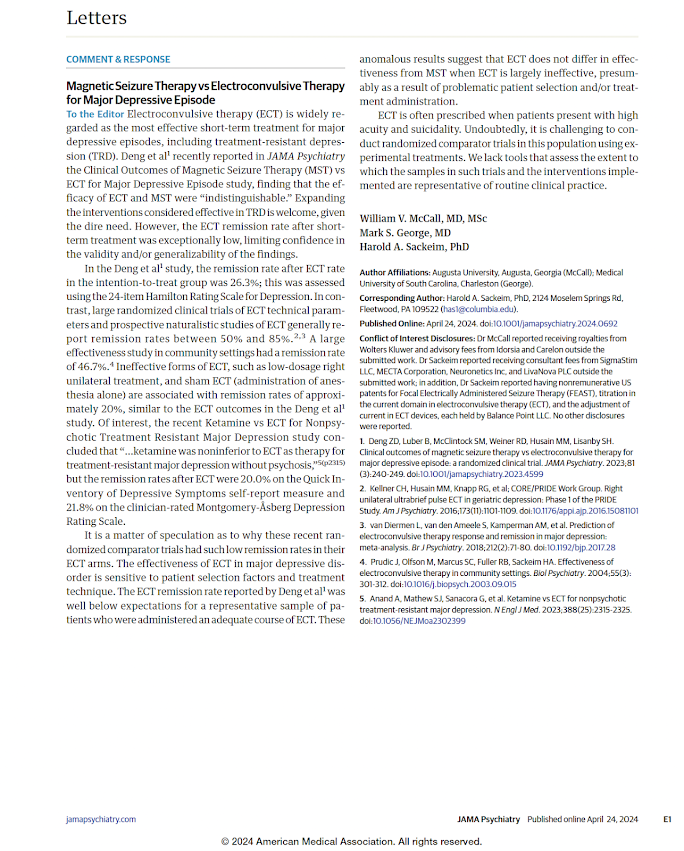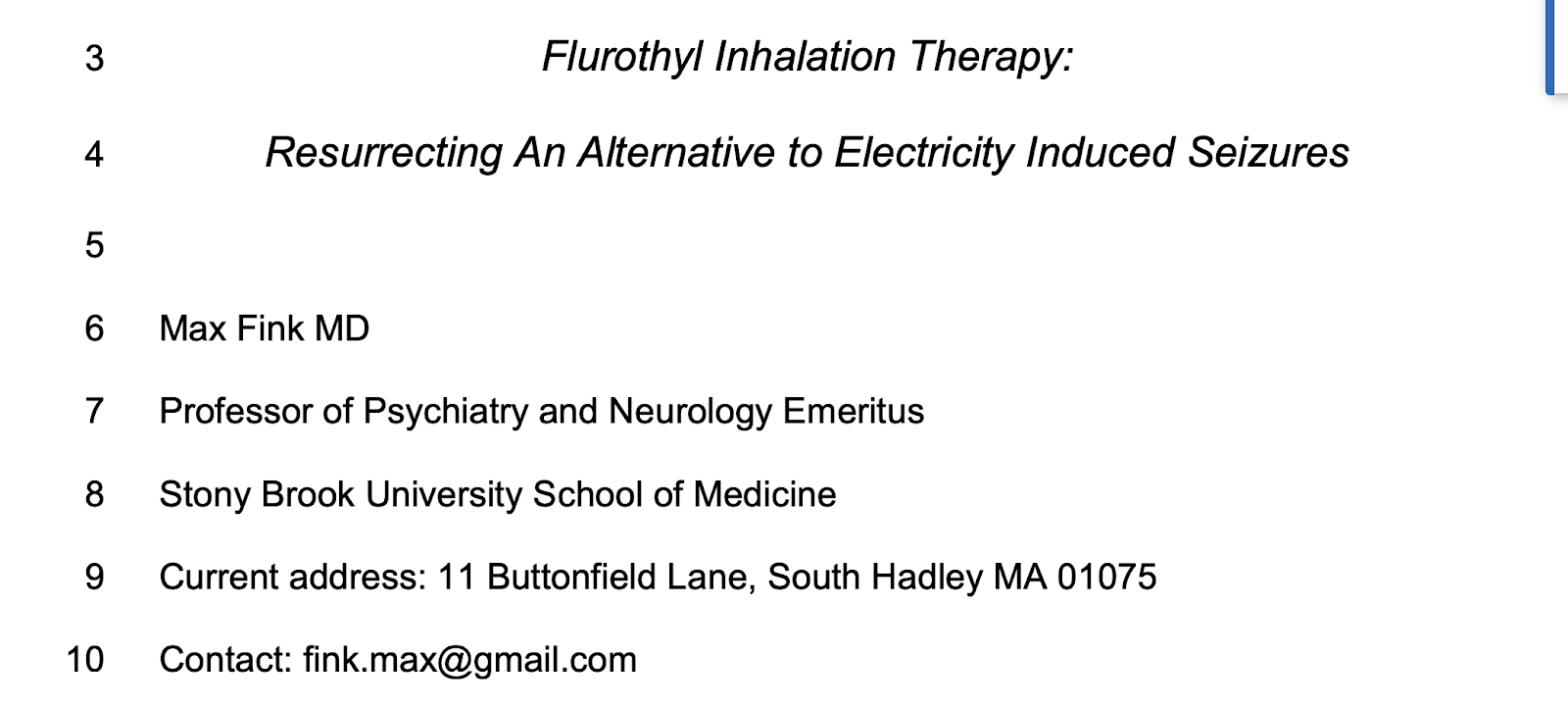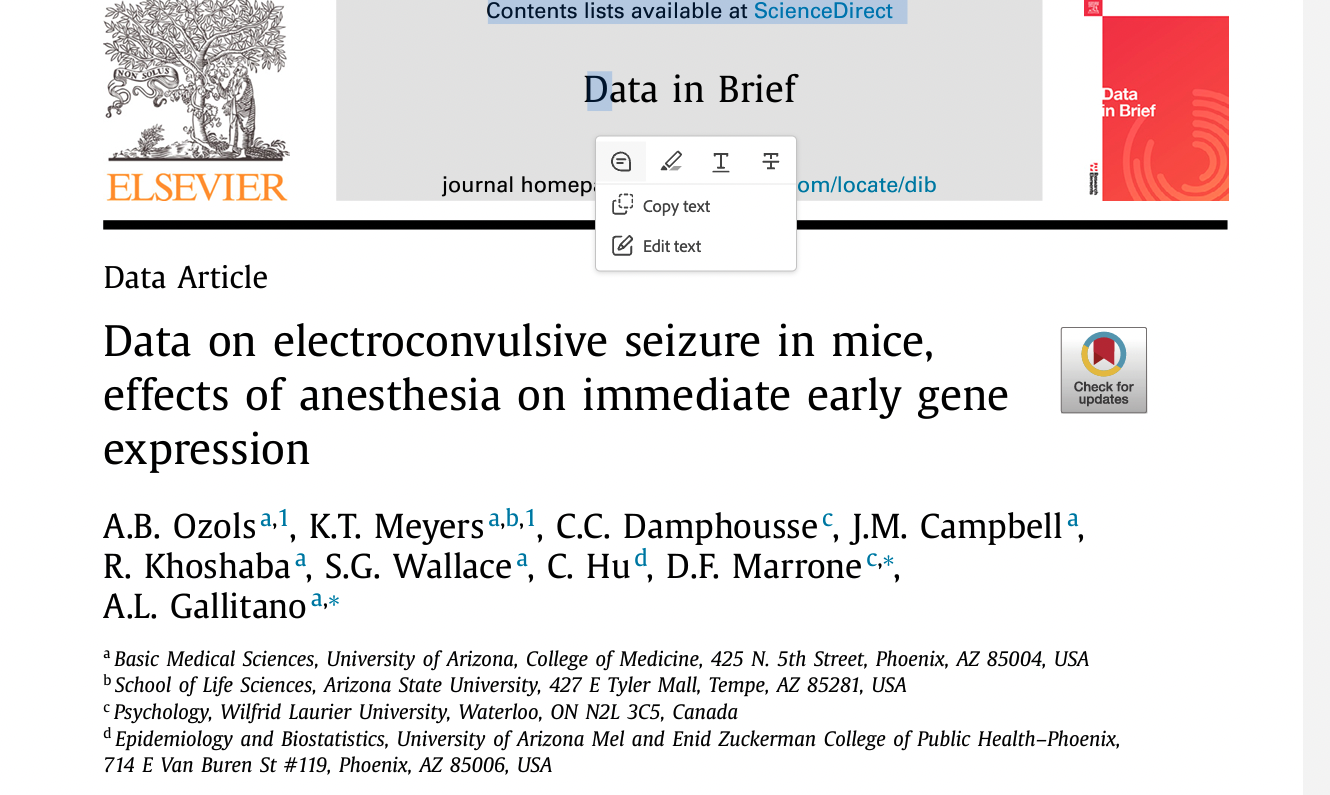Difficult-to-treat-depression: ECT Data From a German Cohort

Out on PubMed, from authors in Germany, is this study: Risk Phenotypes, Comorbidities, Pharmacotherapy, and Electroconvulsive Therapy ( ECT ) in a Cohort with Difficult-to-Treat Depression in Comparison to an Unmedicated Control Group. Maier HB, Borchert A, Neyazi A, Moschny N, Schülke R, Bundies GL, Folsche T, Gaspert A, Seifert J, Bleich S, Scherf-Clavel M, Unterecker S, Deckert J, Frieling H, Weber H. Pharmacopsychiatry. 2024 May 2. doi: 10.1055/a-2292-1438. Online ahead of print. PMID: 38698605 The abstract is copied below: Background: Approximately 15-25% of depressed patients suffer from difficult-to-treat depression (DTD). Patients with DTD require a thorough examination to avoid the oversight of treatable (psychiatric/somatic) comorbidities or (pseudo-)resistance to antidepressant drugs (ADs). Polymorphisms of the cytochrome P450 (CYP) enzymes 2D6 and 2C19, which play a major role in the metabolism of ADs, may contribute to resistance to ADs. Patients with DTD might benef





